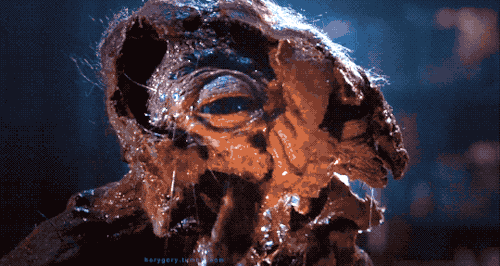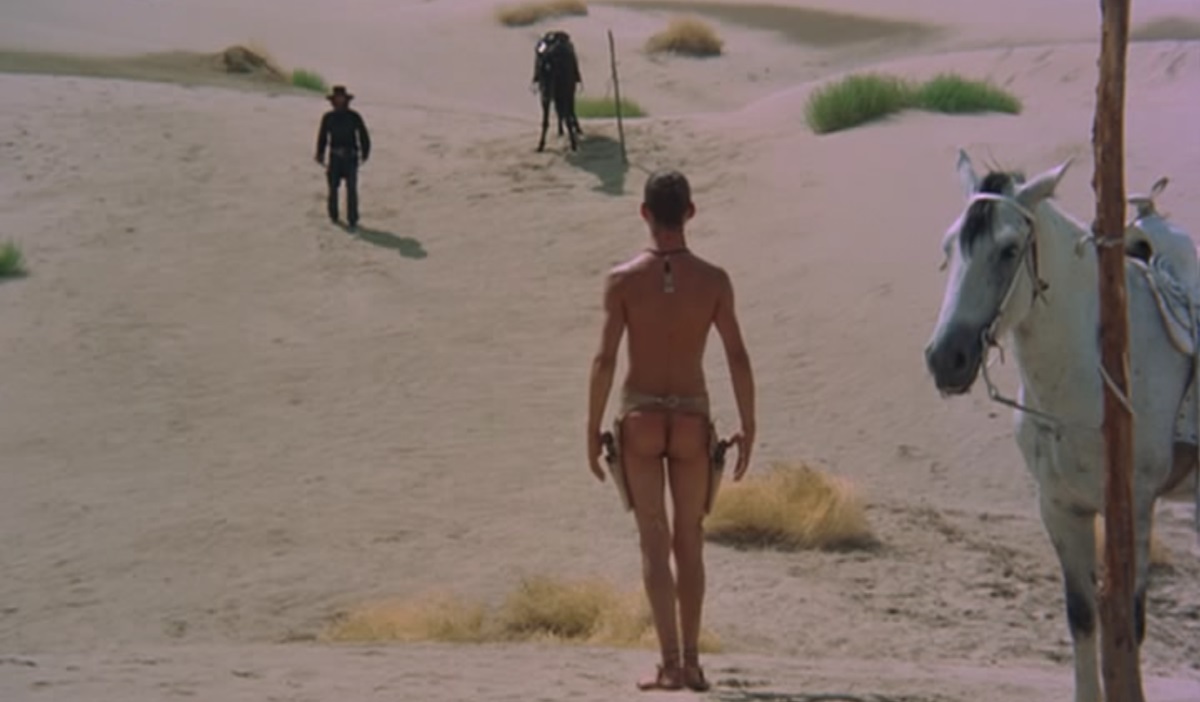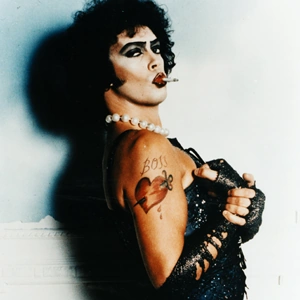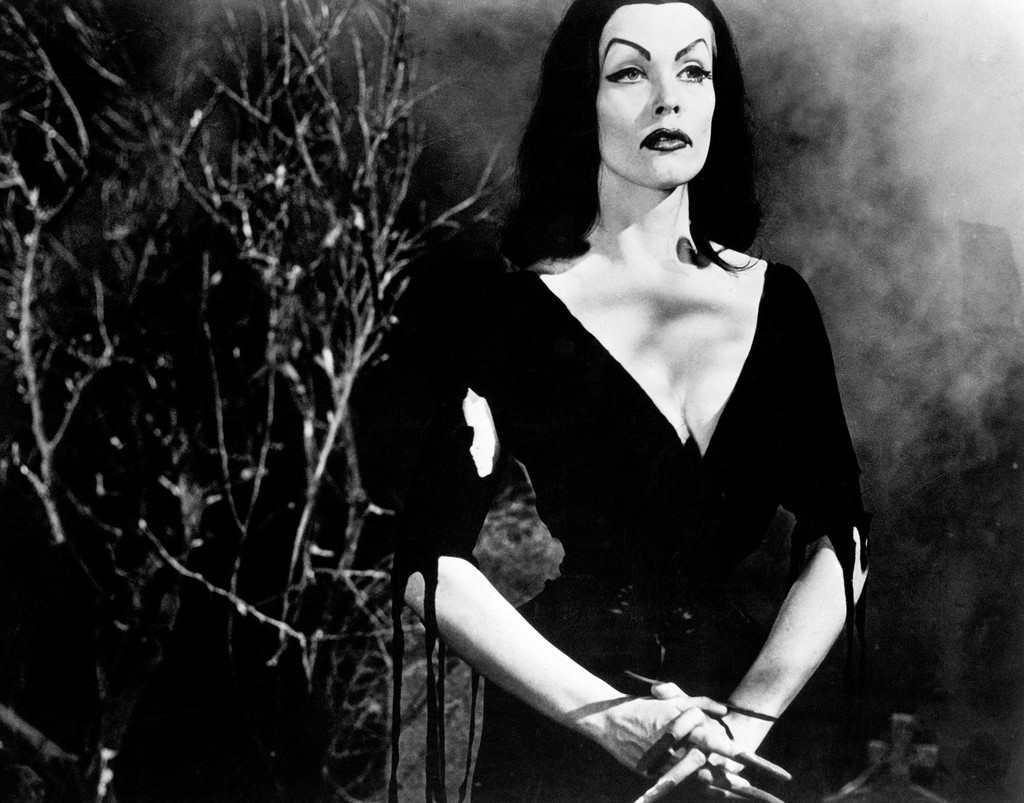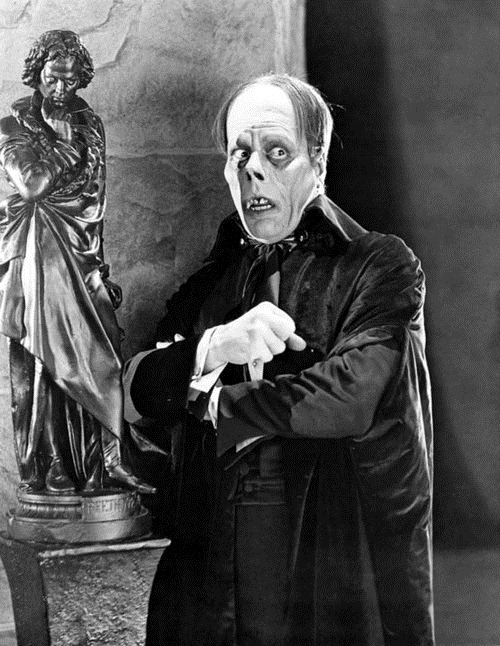This week’s screening was Tom Tykwer’s Run Lola Run (1998), a German thriller, starring Franka Potente as Lola and Moritz Bleibrteu as Manni. The plot takes off when Lola recieves a call from her distressed boyfriend Manni, who needs to find a way to get 100,000 Deutsche Marks. Lola tells Manni to wait for her, and that she will come up with the 100,000 Deutsche Marks in the next twenty minutes. These twenty minutes are repeated three times, each with a different outcome.
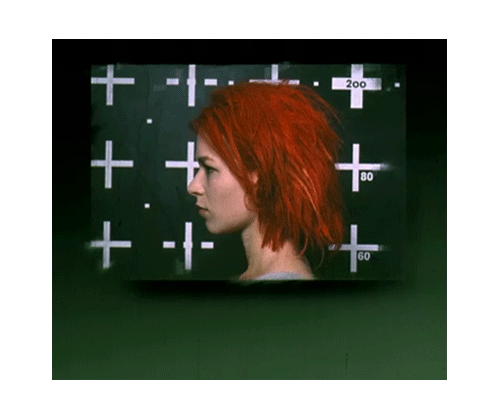
It was my first time watching Run Lola Run, and I absolutely loved it. I really enjoyed the prominent themes of time and fate in the film—as well as chaos theory’s butterfly effect. I often think about how crazy it is that every single choice that I have made has lead me to a specific point in my life, no matter how insignificant the choice—or moment—is. Similar to how, in Run Lola Run, the story gets replayed three times, each time with a slight altering, which result in different outcomes.
I am a huge fan of techno music, so the soundtrack of Run Lola Run was a real treat for me. The techno soundtrack solidifies the elements of rhythm—Lola’s running to the beat—and repetition—the replaying of the story in sync with the repetition of the vocals of the music at the start of each sequence—in the film.
Tykwer makes use of bricolage throughout the film, a trip into the future of cinema. Bricolage refers to the creation of a work which uses mixed media—in this case a medley of live action and animation. As Kosta writes in his essay Tom Tykwer’s Run Lola Run and the Usual Suspects: The Avant-Garde, Popular Culture, and History, “The film’s visual playfulness and its copious allusions to game (roulette and video games) and risk taking emphasize a wild and reckless pleasure in experimenting with cinema’s recently discovered possibilities.” Tykwer’s use of bricolage gives the film the contemporary air that was booming in New German cinema.
Despite being contemporary and experimental, Run Lola Run is drenched in references to its cinematic ancestors. The use of spiral movements in the films references Fritz Lang’s M, and the painting of a woman’s head in the casino is a reference to Alfred Hitchcock’s Vertigo.

The film breaks boundaries—it plays with time and fate—and with the addition of the animations, a fantasy is created and everything and anything becomes possible. The illusion that anything is possible is further fortified by the setting of the film—scattered locations over Berlin with no real spatial unity.
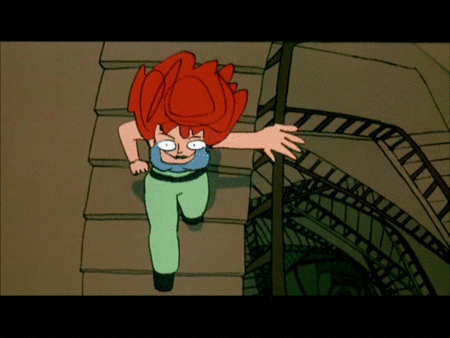
Frank Potente did a phenomenal job at captivating an audience in her role as Lola, as well as being the embodiment of new Germany. Tykwer writes, “I imagined a woman with red hair and her hair had to blow and she had to project desperation and passion.” Potente did just that. Lola is the new Germany—she is determined and powerful; he is aggressive and she is tenacious.
I could not agree more with Kosta’s description of the ending of the movie in Tom Tykwer’s Run Lola Run and the Usual Suspects: The Avant-Garde, Popular Culture, and History. Kosta describes the ending of the movie as, “A self-conscious reenactment of a Hollywood convention.” I must admit, as much as I loved this film, I was left longing for a series of photographs giving insight into Lola and Manni’s life with the extra 100,000 Marks—much like the photographic sequences which followed minor characters throughout the film.
I really enjoyed this course. In these contemporary times, movies are one of the most prominent entertainment industries. While I have always known that I am particularly drawn to cinema, this film course has opened me up to things I previously had no perceptions of.
Before taking this course, I had never truly enjoyed a film produced before 1950–perhaps with the exception of William Wyler’s Wuthering Heights (1939). This course made me realize the value that knowing about films of the past can bring to my perception on more contemporary cinema, such as the references of classics which appear throughout films.
I can proudly say that, because of this course, my friends have grown sick of me gushing over the screenings. In all honesty, I really looked forward to the Wednesday night screenings as a specific time during an otherwise chaotic week to indulge in, and enjoy cinema.
This was my first ever film course, and it opened my eyes to the world of cinema. The lectures and the readings taught me about the birth of the motion picture, Germany and the Weimer Era, the Hollywood studio system, the Hollywood Production Code, Hollywood in the ‘40s, Italian Neorealism and the Exploitation era. As well as the French New wave, the Midnight Movie phenomenon, the birth of the blockbuster, Cinema du look, and New German Cinema.
What really made this course special for me, however, was watching the screenings with insight on the film movements and cinematic techniques. If you asked me what my favorite screening was, I would not be able to tell you. I thoroughly enjoyed most of them, but the films that stood out to me the most, were Bonnie and Clyde, The Fly, and Diva. I would also like to mention that watching films and knowing little random facts and quirks about the production, or having specific things to look for in a film, makes the viewing so much more enjoyable.
This course gave me an appreciation and much more thorough understanding of films that I grew up watching because of my parents, notably films from the French New Wave. The highlight of this semester was learning about French cinematic movements—namely the French New Wave and Cinema du Look. I found myself captivated by the lectures, readings, and screenings that gave me insight into an era of film which my parents grew up on.
If we’re being completely honest, and I know that this is no secret to Dr. Schlegel, these Friday night deadlines—including this one—loomed over my head every week and were the very bane of my existence this semester (a slight exaggeration, yes). I am, however, very happy that these blogposts gave me a platform where I could gush about films, and further my knowledge about film movements that I find fascinating.
All-in-all, I look forward to taking much more film courses throughout my studies, and learning more about the different aspects of film. Thank you Dr. Schlegel, and thank you classmates.




